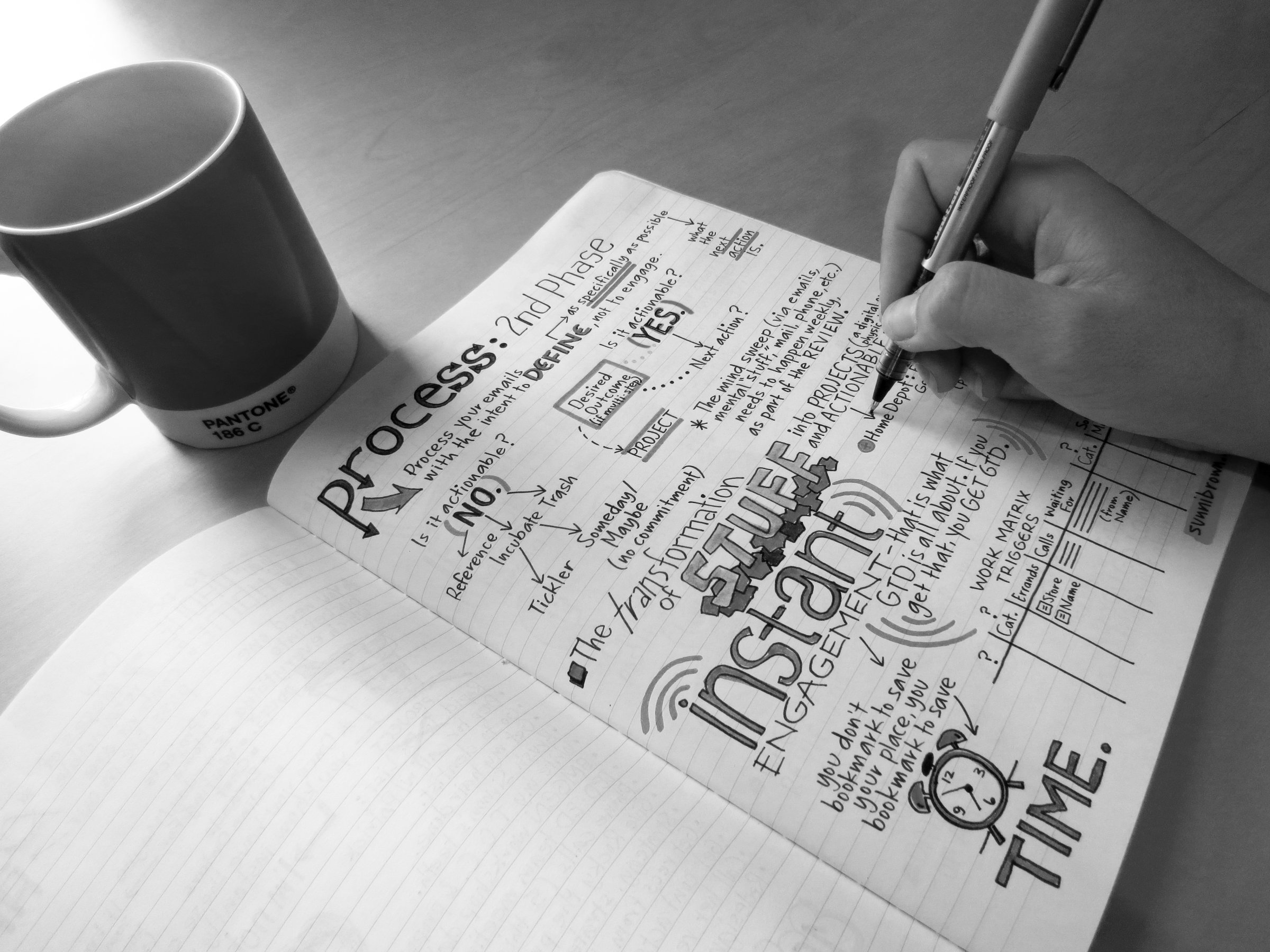
Many of us have had this exact experience: We’re seated at a table during an obligatory meeting, listening to a colleague or higher-up speak. For a variety of reasons — the content is unrelated to our responsibilities, we’re convinced we already know what the person is about to say or we simply can’t stand who’s talking — we start to disengage. We’re conveniently armed with a trusty notebook or iPad and our favorite writing tool, and by the time the meeting is over, curious and seemingly random visual marks have appeared in the margins of our pages. Sometimes they’ve even consumed the page. Some of us make these marks spontaneously and unwittingly. Some of us make them with purpose and skill. Wherever we land on that spectrum, throngs of people around the world and throughout history engage in this act called doodling.
(MORE: How We All Can Be ‘Creative Types’)
For a considerably long time — more than 30,000 years — humans have used doodling as a device, and for a considerably long time, we’ve generally failed to take notice or investigate the purpose this device is serving. But as a visual-thinking consultant and professional Infodoodler, I’ve learned to stop underestimating a device that millions of people are deploying daily. After thousands of interactions and interviews with scientists, teachers, innovators, engineers and artists, it’s become unequivocally clear that there is a deep contribution from this universal act and it needs its day in the sun. We have the opportunity to explore the benefits — cognitive, professional and personal — of this deceptively simple act, and we have the opportunity to seriously advance its applications. Let’s first explore some of the benefits of doodling, which I define as “making spontaneous marks with our minds and bodies to help ourselves think.”
BENEFIT NO. 1: Deeper Sensory Engagement and Immersive Learning
Human beings are multidimensional learners. We’re not designed to sit still and learn predominantly via the auditory and linguistic channels. We like to take in and process information through a variety of channels, using multiple learning modes including auditory, linguistic, visual and kinesthetic. To doodle is to accommodate a richer conversation with more facets of our learning selves. Making visual marks on a page — or even better, in a large, shared white space — accommodates visual information, language and physical movement, and consequently provides access to different kinds of insights at higher levels of retention. When we doodle, we more deeply immerse ourselves into the learning process because it supports a broader activation of neurological networks and native learning modalities.
BENEFIT NO. 2: Focus and Concentration
In today’s hyper-digital environments, there seems to be a near universal, creeping sensation of fractured and partial attention. For many of us, sustained focus and concentration have become increasingly rare, and there are real consequences — productively, psychologically, creatively and emotionally. Doodling is known to be one of the easiest, most accessible, most relaxing ways to not only “be here now” but to slow the mind and allow it to breathe in order to process and integrate information. Our brains must go “off-line” at various intervals as a function of how they optimally perform, and this temporary quieting often leads to our biggest breakthroughs in creative problem solving. Doodling is a ready-made yet simple vehicle for harnessing our minds when they become frenetic due to overwhelming information or the constant pings and pokes of modern life.
BENEFIT NO. 3: Amplified Understanding and Bigger-Picture Thinking
A large part of our thinking system involves pattern recognition. We are exquisite at tracking and recording experiences to form a template of the world that liberates us from having to relearn similar concepts all the time. (Read: I know how one door works, therefore I can extrapolate to know how all doors work.) The downside of pattern recognition is that we tend to round up or approximate by default, and we struggle to contain and see both bigger pictures and gray areas or nuances. We also struggle to break out of habitual thinking patterns and view information from a new perspective. We get stuck seeing a small view the same way. Infodoodling — a term referring to the tight integration of words, shapes and images — is a formidable technique for helping knowledge workers and students map, evaluate, clarify and display larger realities, including the nuances of big-picture systems and processes. Through that effort we amplify our understanding and we often experience a shift in our original points of view.
(MORE: Do, Re, Mi, Fa-get the Piano Lessons: Music May Not Make You Smarter)
To doodle is ultimately to think, and to become literate in infodoodling is to become capable of visually articulating and displaying any system, process or concept imaginable. Thankfully, this skill is not a far leap from our native doodling instincts.
We can quickly move from the basic doodle to the infodoodle and have a powerful effect on awareness, comprehension, information retention, creativity, problem solving and communication. It’s a no-brainer. Infodoodling and the pursuit of basic visual literacy have clear potential to transform conversations and outcomes in our most significant business, social and civil institutions. We could start with students or perhaps with the people already seated at tables in meeting rooms.
Sunni Brown is the author of The Doodle Revolution: Unlock the Power to Think Differently.
More Must-Reads From TIME
- The 100 Most Influential People of 2024
- Coco Gauff Is Playing for Herself Now
- Scenes From Pro-Palestinian Encampments Across U.S. Universities
- 6 Compliments That Land Every Time
- If You're Dating Right Now , You're Brave: Column
- The AI That Could Heal a Divided Internet
- Fallout Is a Brilliant Model for the Future of Video Game Adaptations
- Want Weekly Recs on What to Watch, Read, and More? Sign Up for Worth Your Time
Contact us at letters@time.com